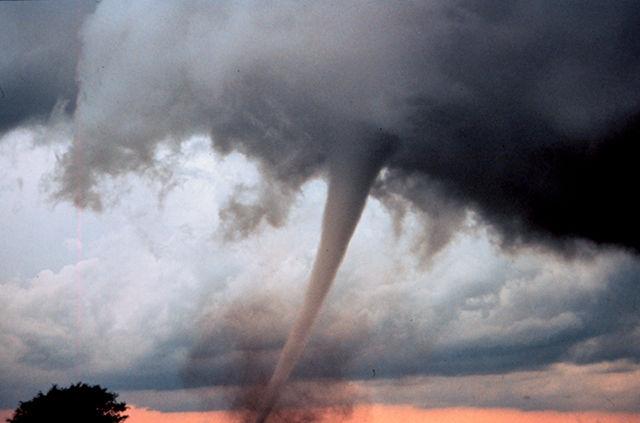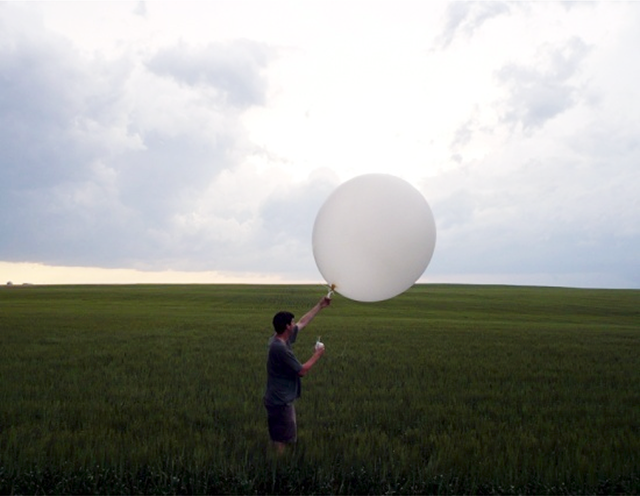With the worry and uncertainty the tornado warnings brought NC State and the surrounding Triangle community yesterday, many may wonder how and why tornadoes are a threat this season.
Matthew Parker, a professor in the Department of Marine, Earth and Atmospheric Sciences and head faculty of the Convective Storms Group, works to learn more about tornadoes in the Southeast — in a similar form known as “storm chasing.”
Overall, the Southeast is more associated with hurricanes than tornadoes. However, the Southeast experiences tornadoes in early spring, as the WolfAlerts from yesterday exemplified. Parker said these tornadoes are less studied than ones occurring in the Great Plains region, which surrounds the Midwest states.
An NC State research team, led by Parker, is planning a field observation with National Severe Storms Lab to study the nature of tornadoes in the Southeast.
This field observation is part of VORTEX-SE, a storm research pilot project funded by the National Severe Storms Lab. The project’s aim is to scientifically study the tornadoes happening in the southeastern region of the United States due to the limited information scientists have about tornadoes in the southeastern region.
“Great Plain has received a lot more studies than the Southeast,” Parker said. “And we have no idea how much of what we know from the Great Plains can be applied to the Southeast tornadoes.”
Parker became said he became interested in storm research after watching a show about tornadoes on TV.
“There was a NOVA special on PBS when I was 6 or 7 years old,” Parker said. “It was the first NOVA special about tornadoes. From that age, I just knew I wanted to do this.”
One of the ways tornadoes in the southeastern region differ from the ones in the Great Plains region is meteorologically, according to Parker. Due to the very humid environment in the Southeast, the storms tend to be more vertical than ones being observed in the Great Plain. In addition, the tornadoes in the Southeast mostly occur during the night, while tornadoes occur during the daylight in the Great Plain.
The Convective Storms Group is planning the first field observation of VORTEX-SE. The team will travel to Huntsville, Alabama, a home base for the project, in March and April, according to Jessica King, a graduate student studying meteorology and a member of the Convective Storms Group.
King said the team does not have set dates for the field observation, as it is impossible to predict the specific date a tornado will occur.
Parker said it is important to note that the team’s field observation is different from what storm chasers do. Unlike the storm chasers who dive head-on into tornadoes to capture photos of the storm, Parker said the Convective Stomrs Group will be waiting in a relatively safe distance (about 100 km) away from the storm, collecting data.
“The primary difference is we are there to collect data, not to take photos,” Parker said. “Storm chasers get rather close to storm. But we usually stay back to collect different sets of data on wind speed and direction.”
The Convective Storms Group will be collecting this data using a special weather balloon. The weather balloon is filled with helium and is GPS-monitored. The balloon is also attached with an instrument called Sonde that measures temperature, humidity, wind speed and wind direction.
With planning, the team is focused on coordination, according to Parker. The field observation includes multiple research teams and different equipment beyond the Convective Storms Group and what it uses. So, the team is trying to figure out the most effective methods of coordinating with all the different teams and equipment in advance.
coordination while the team plans, Parker said they are also concerned about the safety of the members. Because of the unpredictability of storm, and the fact that the storm occurs at night, the likelihood of accidents are high.
“The main concern we have is keeping the mobile teams safe,” Parker said. “This is especially a concern for this project because the tornadoes in the Southeast occur overnight, and visibility will be very limited.”
Environmental hazards, namely trees, have to be considered during planning as well, according to Parker. He said that unlike the treeless, sea of grass in the Midwest, the southeastern region is heavily wooded. Trees are obstacles not only because they are not only hazardous to the team, but they interfere with the equipment as well.
“One of the few challenges are trees,” Parker said. “There are a lot more trees in the Southeast than the Great Plains. That makes it difficult to see the horizon for the storm and map out with radar. It’s even harder to launch weather balloons, as they will drift away towards the trees.”
Parker said he hopes this project will lead to more interest in studying severe storms of the southeast region in the future.
Matthew Parker, a professor in the Department of Marine, Earth and Atmospheric Sciences and head faculty of the Convective Storms Group, launches a weather balloon for a field observation in 2010. On a current project, Parker's group will collect data using a weather balloon that is filled with helium and is GPS monitored. The balloon is also attached with an instrument called Sonde that measures temperature, humidity, wind speed and wind direction.









